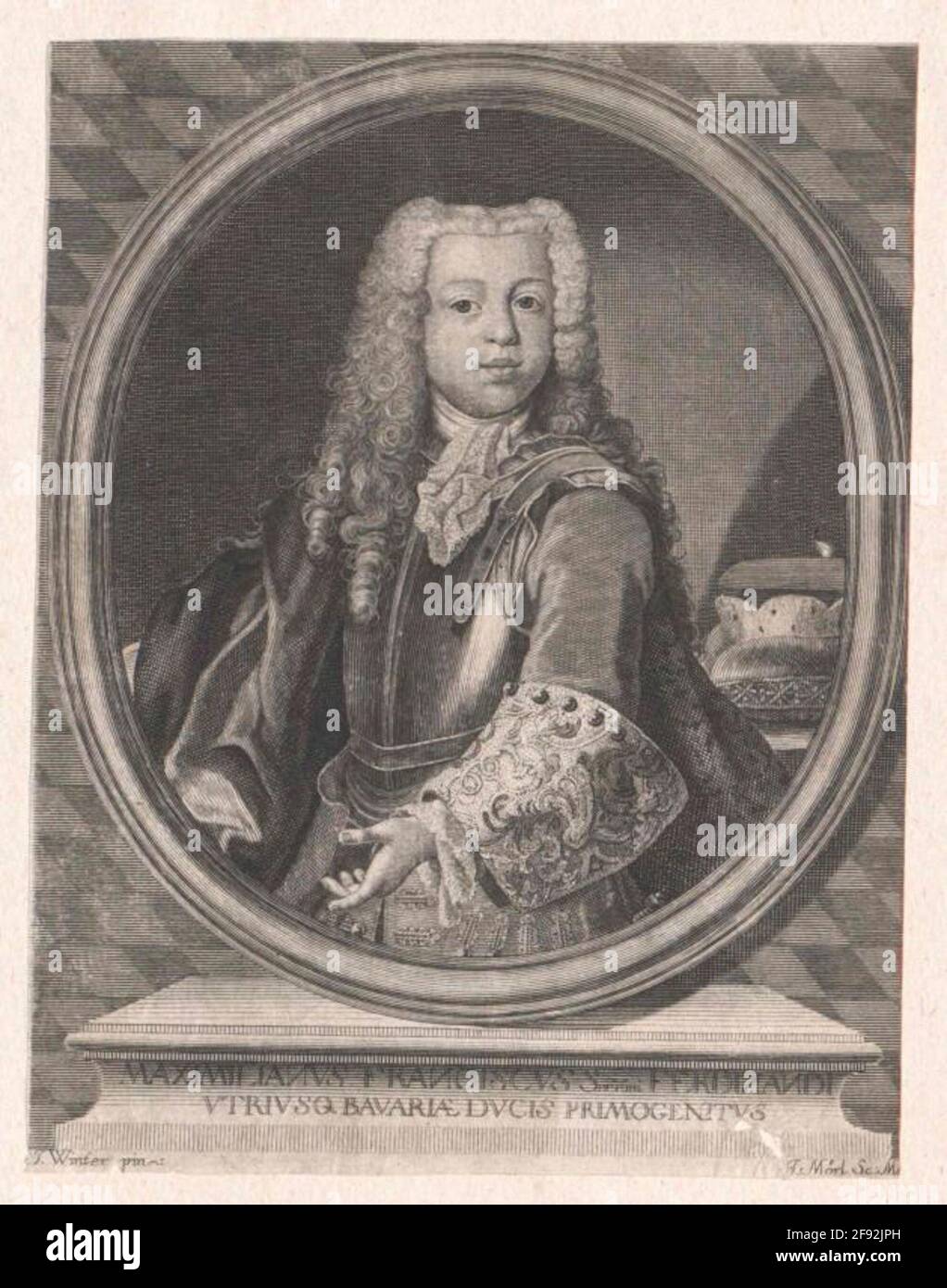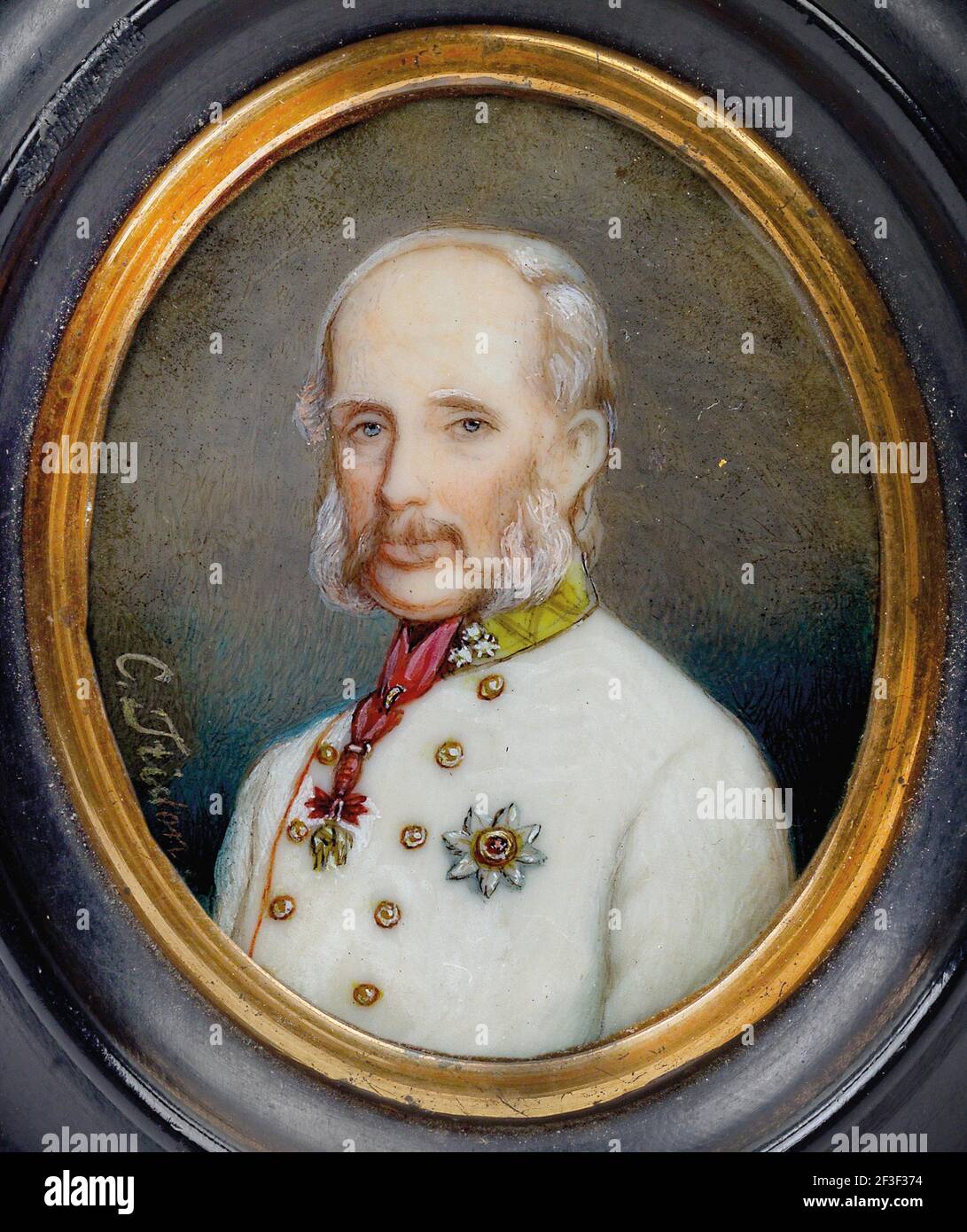The royal family of Bavaria has long been a subject of fascination for many. Among the most prominent members is Duke Franz of Bavaria, who has recently been in the news with new photographs showcasing his life and heritage. In this article, we will delve into the world of Duke Franz, exploring his personal life and the significance of his royal lineage.
The photographs, taken by renowned photographer Erwin Olaf, offer a glimpse into the private life of the duke. One image shows him with his long-time partner, Dr. Thomas Greinwald, and their adorable dachshund. Another captures him standing in front of two portraits of his ancestors, Queen Therese of Bavaria and King Ludwig I of Bavaria. These images not only highlight the duke's personal relationships but also underscore his connection to the rich history of the royal family.
what are some other notable portraits in the collection

- Emperor Maximilian I, by Albrecht Dürer (1519): This portrait features the Holy Roman Emperor Maximilian I, who was a significant patron of Dürer. The painting is notable for its solidity and colors, reflecting Dürer's travels to Italy.
- Infanta Margarita, by Diego Velázquez (1651): This portrait shows the Infanta Margarita, who married Emperor Leopold I and moved to Vienna. The painting is notable for its loose brushstrokes and the individuality it captures behind the royal mask.
- Saint Michael Vanquishing the Devils, by Luca Giordano (1664): This painting depicts Archangel Michael defeating the rebellious angels of heaven. It is notable for its lively and dynamic style, as well as its draftsmanship.
which contemporary artists are featured in the "Unkempt Paintings" exhibition

- Georg Baselitz: Known for his bold and expressive paintings, Baselitz is a prominent figure in contemporary German art.
- Joseph Beuys: A German artist known for his multimedia works, Beuys was a key figure in the development of conceptual and performance art.
- Heinz Butz: A German painter, Butz is recognized for his abstract and figurative works that often explore themes of nature and human experience.
- Matthias Dornfeld: A German painter, Dornfeld is known for his abstract and expressive works that often incorporate elements of landscape and architecture.
- Hedwig Eberle: A German painter, Eberle is recognized for her abstract and figurative works that often explore themes of nature and human experience.
- Philip Gröning: A German painter, Gröning is known for his abstract and expressive works that often incorporate elements of landscape and architecture.
- Ioan Grosu: A Romanian painter, Grosu is recognized for his abstract and figurative works that often explore themes of nature and human experience.
- Franz Hitzler: A German painter, Hitzler is known for his abstract and expressive works that often incorporate elements of landscape and architecture.
- Jörg Immendorff: A German painter, Immendorff is recognized for his abstract and figurative works that often explore themes of politics and social commentary.
- Annette Lucks: A German painter, Lucks is known for her abstract and expressive works that often incorporate elements of landscape and architecture.
- Imi Knoebel: A German painter, Knoebel is recognized for his abstract and figurative works that often explore themes of nature and human experience.
- Oscar Koester: A German painter, Koester is known for his abstract and expressive works that often incorporate elements of landscape and architecture.
- Palermo: A German painter, Palermo is recognized for his abstract and figurative works that often explore themes of nature and human experience.
- A.R. Penck: A German painter, Penck is known for his abstract and expressive works that often incorporate elements of landscape and architecture.
- Erwin Pfrang: A German painter, Pfrang is recognized for his abstract and figurative works that often explore themes of nature and human experience.
- Sigmar Polke: A German painter, Polke is known for his abstract and expressive works that often incorporate elements of landscape and architecture.
- Gerhard Richter: A German painter, Richter is recognized for his abstract and figurative works that often explore themes of nature and human experience.
- Florian Süssmayr: A German painter, Süssmayr is known for his abstract and expressive works that often incorporate elements of landscape and architecture.
- Norbert Tadeusz: A German painter, Tadeusz is recognized for his abstract and figurative works that often explore themes of nature and human experience.
- Rudi Tröger: A German painter, Tröger is known for his abstract and expressive works that often incorporate elements of landscape and
what themes are explored in the "Unkempt Paintings" exhibition
- Contemporary Art and its Recognition: The exhibition highlights Duke Franz of Bavaria's foresight in recognizing the importance of contemporary art during a time when it was still struggling for recognition. His donation of a large part of his private art collection to the Wittelsbach Settlement Fund in 1984 helped to make these "unkempt paintings" accessible to the public.
- German Art from the 1960s and 1970s: The exhibition showcases early works by prominent German artists from this period, including Gerhard Richter, Georg Baselitz, Sigmar Polke, and Palermo. These artists are known for their bold and expressive styles, which often incorporated elements of landscape and architecture.
- The Role of Patronage: The exhibition underscores the significant role that Duke Franz of Bavaria has played as a patron of contemporary art. His long-standing support for German
 |
| Dr. Thomas Greinwald and Duke Franz of Bavaria with their dachshund. Photo credit: Erwin Olaf. |
We are happy to share two pictures of Duke Franz of Bavaria, Head of the Royal House. In the first photograph, Duke Franz is shown with his longtime partner Dr. Thomas Greinwald and their daschund. In the second photograph, we see Duke Franz of Bavaria in front of two Joseph Karl Stieler portraits of his ancestors, Queen Therese of Bavaria and King Ludwig I of Bavaria.
 |
| The duke and his dachshund. Photo credit: Erwin Olaf. |
We hope you enjoyed this exclusive look into the life of Duke Franz of Bavaria, Head of the Royal House. The photographs shared in this article offer a glimpse into the private life of the duke, showcasing his personal relationships and his connection to the rich history of the royal family. The images, taken by renowned photographer Erwin Olaf, highlight the duke's dedication to his heritage and his role as a patron of the arts. As we conclude this article, we would like to emphasize the significance of the royal family's legacy and the importance of preserving their history for future generations. The royal family has played a crucial role in shaping the cultural and artistic landscape of Europe, and their contributions continue to inspire and influence contemporary art and culture. We hope that this article has provided you with a deeper understanding of the life and legacy of Duke Franz of Bavaria and the royal family he represents.
As we bid farewell to this article, we would like to express our gratitude to the photographer Erwin Olaf for capturing these intimate moments of the duke's life. His work not only provides a unique perspective on the royal family but also serves as a testament to the enduring power of art to transcend time and culture. We hope that this article has inspired you to learn more about the royal family and their contributions to the world of art and culture. Whether you are an art enthusiast, a history buff, or simply someone interested in learning more about the royal family, we encourage you to explore the rich history and cultural heritage of the House of Wittelsbach.
what other notable figures are featured in the Joseph Karl Stieler portraits
- Ludwig van Beethoven: Stieler's portrait of Beethoven is one of his most famous works, showcasing the composer's iconic features.
- Johann Wolfgang von Goethe: Stieler painted Goethe in 1828, capturing the poet's likeness in a portrait that reflects his Neoclassical style.
- Alexander von Humboldt: Stieler's portrait of Humboldt, a geographer and botanist, highlights the scientist's contributions to the fields of exploration and discovery.
- Franz Brentano and Antonie Brentano: Stieler painted the pendant portraits of the Brentano siblings in 1808, showcasing his skill in capturing the likenesses of his subjects.
- Ludwig Tieck: Stieler's portrait of Tieck, a German writer and poet, is another notable example of his work, reflecting his ability to capture the essence of his subjects.
- Queen Therese of Bavaria and King Ludwig I of Bavaria: Stieler's portraits of these royal ancestors of Duke Franz of Bavaria are significant in the context of the royal family's history and heritage.


No comments:
Post a Comment